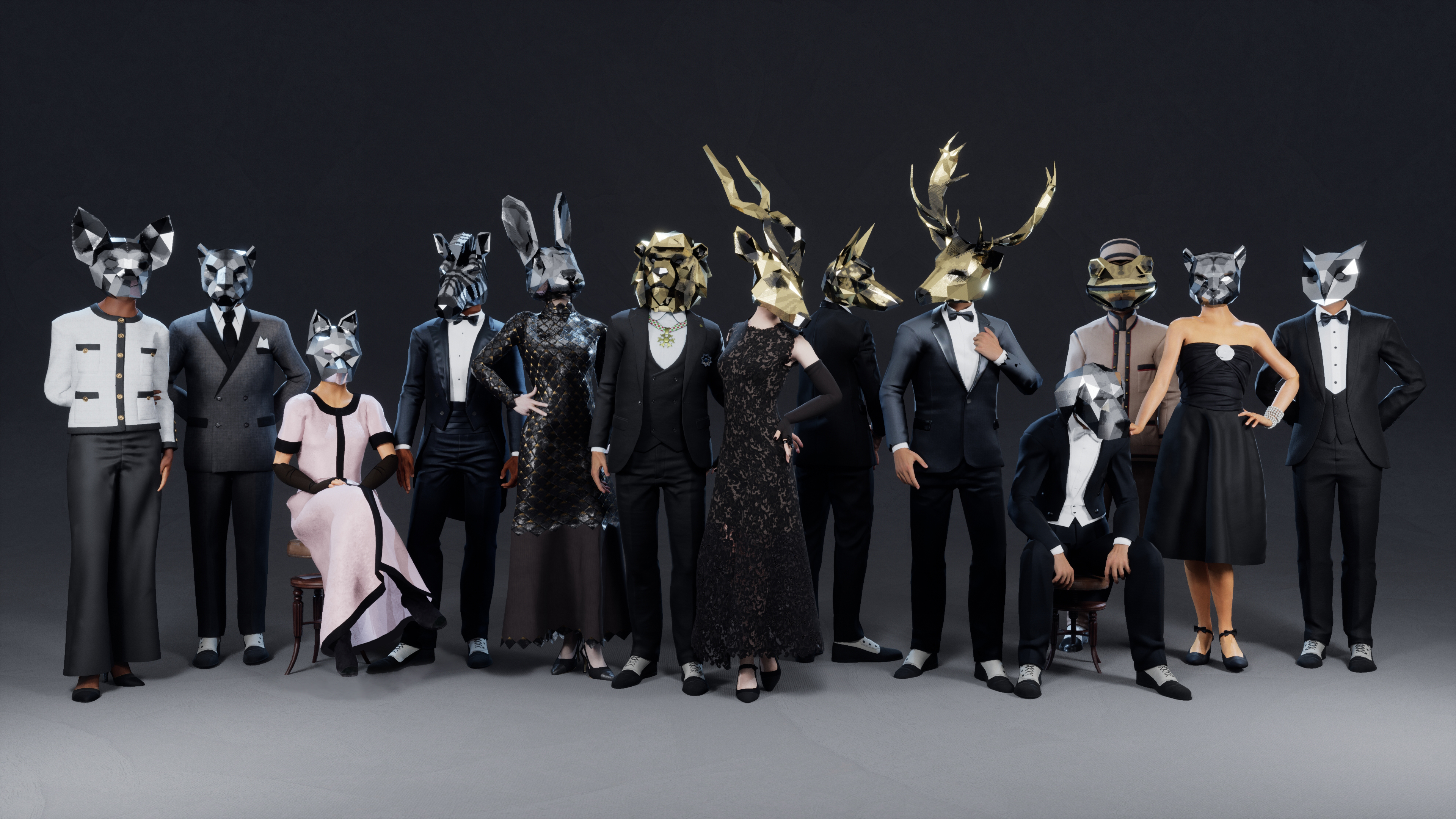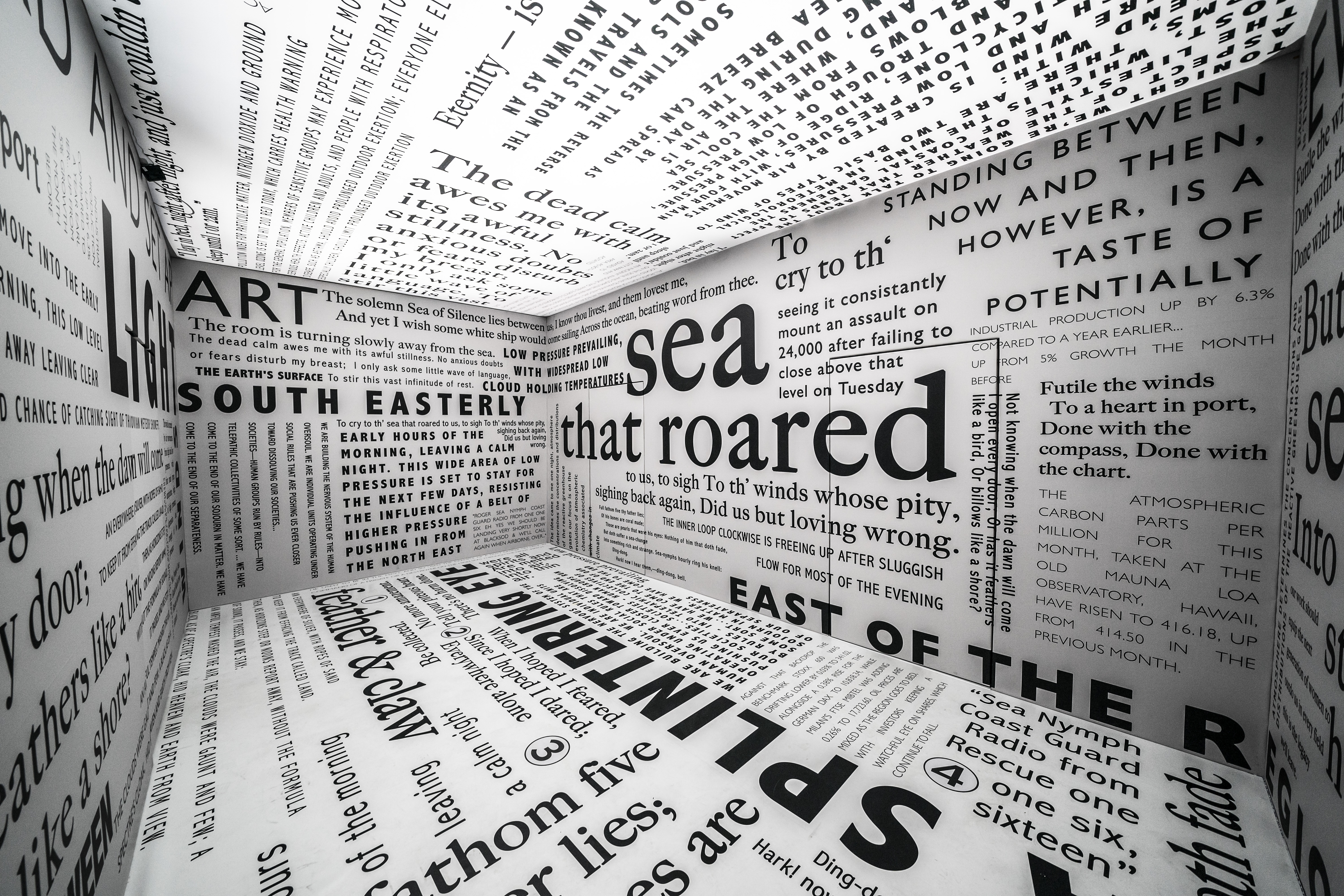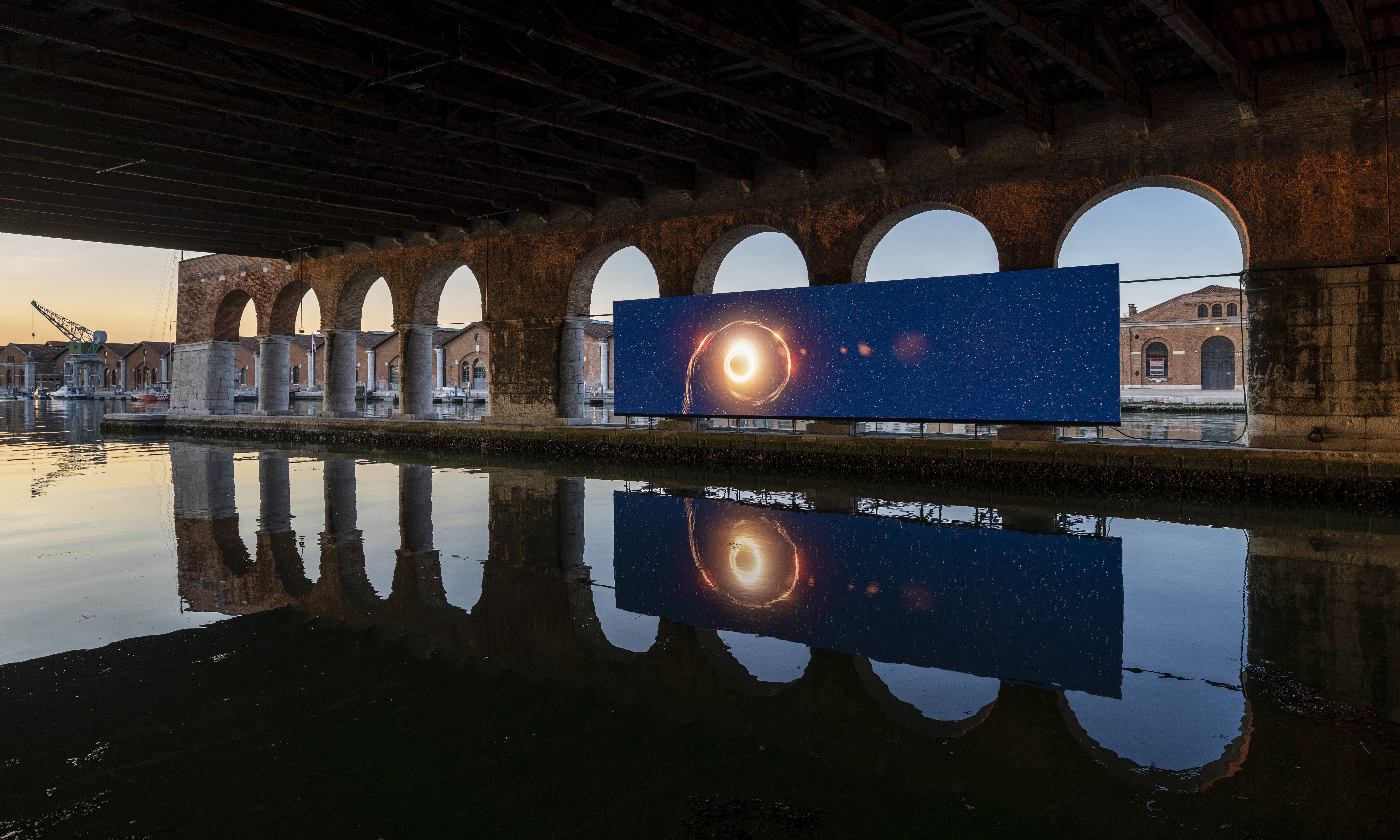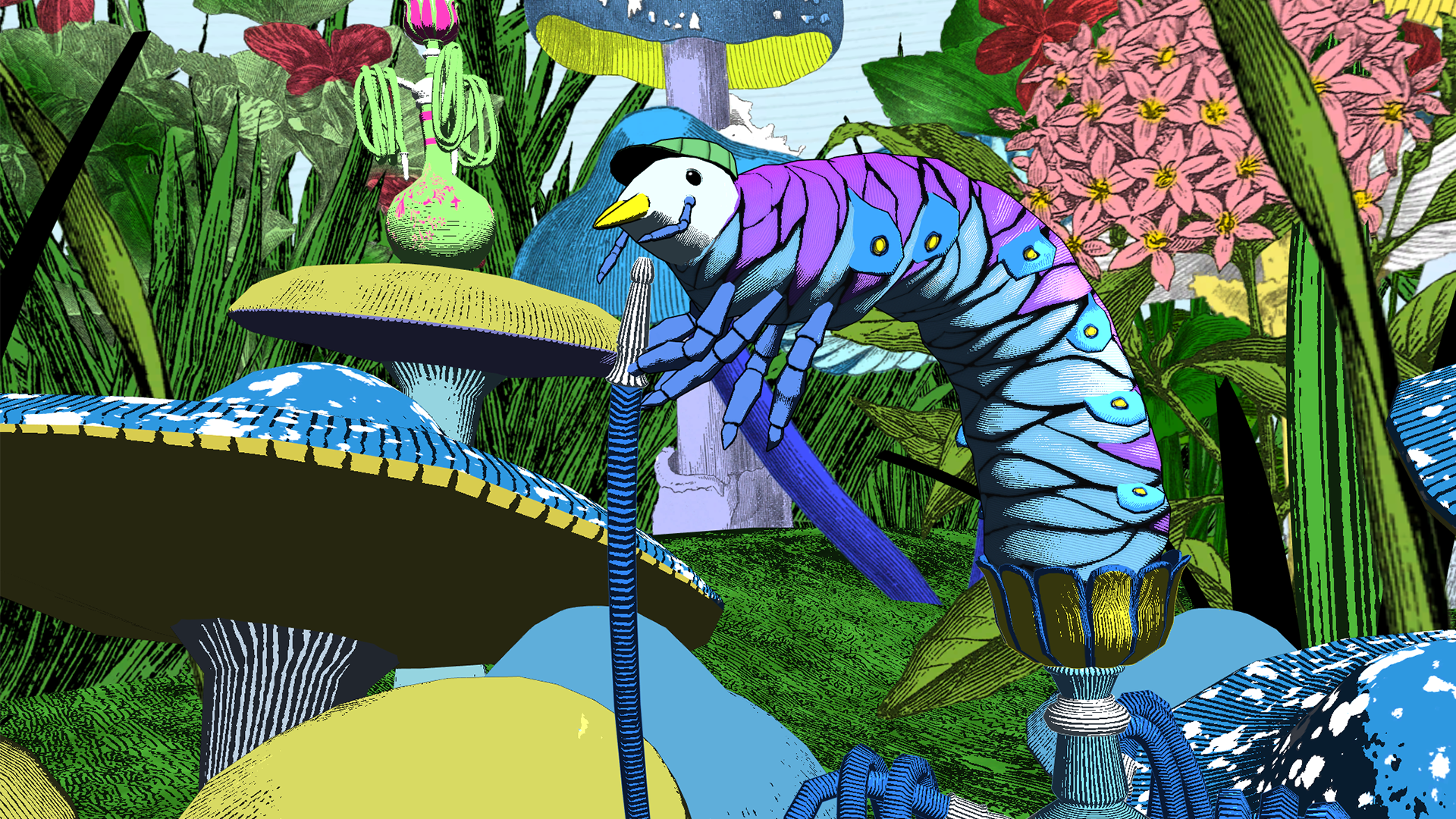 Avatar costume design by Chanel, Le Bal de Paris, Blanca Li Dance Company.
Avatar costume design by Chanel, Le Bal de Paris, Blanca Li Dance Company.
“I think of art… as a Distant Early Warning system that can always be relied on to tell the old culture what is beginning to happen to it.” – Marshall McLuhan
Arts and culture play a vital role in our lives: for creativity and imagination, social connection, and critical thinking. Artists have always used different tools and canvases for creative expression, from caves, to the paintbrush, to the latest technologies such as game engines, virtual reality, and AI. Artists tell the stories of our times. They imagine new worlds and make work that we experience both on a personal and collective level. They humanise new technologies and help us to understand the potential (and challenges) of how we use these new tools.
This article aims to give insight into how arts and culture leads the way in digital innovation, exploring context, the processes around the work, the benefits and outcomes, and the diverse participants in this community of practice.
 Insomnia room within virtual reality stage set installation at the Linbury Theatre Royal Opera House London, Current, Rising. Photo credit Johan Persson.
Insomnia room within virtual reality stage set installation at the Linbury Theatre Royal Opera House London, Current, Rising. Photo credit Johan Persson.
Cultural production using technology has accelerated across arts, culture, and the creative industries in recent years. There have been huge changes in how content is created, shared, and experienced, driven by leaps in technology and shifting audience behaviours. Many artists and cultural organisations have been experimenting with new forms of production using immersive technologies such as real-time production, motion/volumetric capture, virtual/augmented/mixed reality, and AI. These technologies underpin audience experiences often impossible in traditional formats. They enable interaction within multisensory virtual environments that provide a unique sense of presence, embodiment, immersion, and sometimes interactivity with other audience members or performers. Experimentation with these technologies in creative practice has led to the development of different experiences, platforms, business models, and research that together form a community of practice that can be broadly described as ‘creative R&D’.

Installation view, Wu Tsang – Of Whales, Venice Biennale 2022. Photo credit Matteo De Fina.
R&D is rooted in ideas and questions. It’s an exploratory process that allows for new forms of creative practice and formats to emerge. Instead of following a fixed path, it takes an iterative approach, with cycles of prototyping, testing, and iteration. Some ideas fail, some succeed. Risk is fundamental. The learning and insights gathered are often valued as highly as the final outcomes. The process can range from informal, ad-hoc, small-scale experiments to discreet phases within a specific project to structured, cross-sector collaborative R&D challenges and infrastructure programmes. The process often involves cross-disciplinary collaboration made up of teams from creative, industry, and research sectors.
Artists are often the first to experiment with new technologies as part of their creative practice before they reach mainstream awareness. Animator and composer John Whitney, considered to be the forefather of CGI, used early computers developed during World War II to produce dynamic animated visualisations (he later became the first artist-in-residence at IBM). Artist Vera Molnár pioneered early forms of generative art while working at a research lab in Paris where she made computer graphic drawings on a plotter. Nam June Paik predicted the future of global connectivity and the internet in seminal works such as ‘Electronic Superhighway’, an enormous techno-sculpture constructed using multiple CRT televisions, VHS players and neon tubing.  Nam June Paik, Electronic Superhighway: Continental U.S., Alaska, Hawaii, 1995, fifty-one channel video installation (including one closed-circuit television feed), custom electronics, neon lighting, steel and wood; color, sound, roughly 15 x 40 x 4 feet (Smithsonian American Art Museum, Washington, D.C.; photo: Steven Zucker, CC BY-NC-SA 2.0) © Nam June Paik Estate.
Nam June Paik, Electronic Superhighway: Continental U.S., Alaska, Hawaii, 1995, fifty-one channel video installation (including one closed-circuit television feed), custom electronics, neon lighting, steel and wood; color, sound, roughly 15 x 40 x 4 feet (Smithsonian American Art Museum, Washington, D.C.; photo: Steven Zucker, CC BY-NC-SA 2.0) © Nam June Paik Estate.
Many commercial companies and organisations recognise the unique insight afforded by experimenting with creative practitioners. There is a long history of collaboration between artists and technology or scientific companies, from pioneering initiatives such as Experiments in Art and Technology (E.A.T.) at Bell Labs, pairing engineers with artists, choreographers and composers, to artist-in-residence programmes at organisations like NASA, CERN and Google Deepmind, that provide artists with access to scientific facilities and research. These programs seek to create connections between artistic expression and technological innovation and establish a dialogue between artists and engineers. This collaboration at the intersection of art and technology is still thriving today: OpenAI, the company behind image generator DALL-E and large-language model ChatGPT just announced Alexander Reben as the first artist-in-residence at the company.
This collaboration is a mutual exchange: artists benefit from access to emerging technologies, research, and funding to support their work, while companies gain from the artist’s creative perspective, offering fresh ideas and pointing toward solutions they might not have identified otherwise. The R&D process also delivers broader organisational benefits, building collaboration among internal teams that historically operated in silos. Working with different external partners equips teams with new skills and insights extending beyond individual projects. However, there is a notable power dynamic at play in these collaborations between artists and technology companies, and there is ongoing work around how to ensure artists’ contributions are valued and quantified, as well as to better formalise how artists’ IP is protected in these collaborations.
VIVE Arts at HTC is a good example of this kind of collaborative initiative. When HTC started making virtual reality headsets, it recognised the vitality of cultural practice and the unique way that artists can push technology in radical, unexpected directions. The programme positions technology as space for imagination and new kinds of creativity. Over the past six years, VIVE Arts has been supporting, commissioning and collaborating with artists and cultural institutions, helping them to experiment with immersive technologies. The programme has partnered with over sixty institutions, including Musee d’Orsay, the Triennale, V&A, Tate Modern, Louvre, Art Basel, and the Venice Biennale. It also partners directly with artists to commission and produce new work, including Wu Tsang, Dominique Gonzalez-Foerster, Albert Oehlen, Ben Elliot, and recently, in partnership with Somerset House, the artist and quantum physicist, Libby Heaney.  Libby Heaney, Heartbreak and Magic, 2024, VR experience, time variable. Courtesy of Libby Heaney.
Libby Heaney, Heartbreak and Magic, 2024, VR experience, time variable. Courtesy of Libby Heaney.
So who participates in this landscape of cultural innovation? The creative R&D community brings together a wide range of players, spanning public and commercial sectors. It includes artists, creatives, producers, technologists, cultural venues, festivals, labs, studios, technology platforms and providers, and academic institutions. These stakeholders either work individually (largely project-based work), as part of clusters, or in more structured challenges or infrastructure programmes such as Audiences of the Future, XRtists, and CoStar.
Artists and creatives are at the centre of this community, from individual artists and creators to collectives to studios with large teams. They lead artistic innovation, forging new approaches to form, storytelling, and interaction.
In the cultural sector, there are many organisations who have shown a continued commitment to digital innovation in arts and culture, including (and this list is by no means exhaustive) Serpentine Arts Technologies (London), Barbican Immersive (London), Light Art Space Foundation (Berlin), PHI Centre (Montreal), Abandon Normal Devices (Manchester), Royal Shakespeare Company (Stratford), V&A (London/Dundee), Watershed (Bristol), ACMI (Melbourne), National Gallery X (London), the Immersive Storytelling Studio at the National Theatre (London), ZKM Centre for Art and Media (Karlsruhe), and Somerset House Studios (London).  Still from Curious Alice. Featuring original artwork by Kristjana S. Williams, 2020.
Still from Curious Alice. Featuring original artwork by Kristjana S. Williams, 2020.
Festivals are key sites for the community to convene, experience creative work, and share learnings. Key festivals committed to supporting critical debate and development of interactive/immersive productions include Venice Immersive, IDFA DocLab, Tribeca Immersive, CPH Dox, Ars Electronica, London Film Festival Expanded, SXSW Interactive, and REMIX. Commercial galleries also support the presentation of innovation in creative practice, those with particular emphasis on digital art including Gazell.io and Transfer Gallery.
In the technology sector there are specific initiatives set up for collaboration on digital innovation projects with artists and cultural organisations – in addition to VIVE Arts (HTC), there is also Google Arts and Culture Lab which hosts an artist residency programme and oversees global collaborations with artists, scientists and cultural institutions. There are many ongoing labs and residencies which support collaboration between artists, cultural venues, industry partners, and researchers, including CPH Dox Lab, LACMA’s Art + Tech Lab, New Inc at the New Museum, 7×7 at Rhizome, MIT Co-Creation Studio, Immersive Assembly at Mediale, Studio Lab at FACT, the European Creators Lab, ONX Studio, and the Columbia University Storytelling Lab.
 VR still, The Deaf Club, Melissa Malzkuhn, 2023, courtesy of artist. Malzkuhn’s artwork, selected from the inaugural Criptech Metaverse Lab, reimagines the concept of the Deaf Club–a vital part of Deaf culture and storytelling globally–within the digital realm.
VR still, The Deaf Club, Melissa Malzkuhn, 2023, courtesy of artist. Malzkuhn’s artwork, selected from the inaugural Criptech Metaverse Lab, reimagines the concept of the Deaf Club–a vital part of Deaf culture and storytelling globally–within the digital realm.
This article offers an introduction to the community of practice evolving at the intersection of arts, culture, and digital innovation: its context, the process, its value and importance, and some of the actors operating in this space. However, showing the work is the best way of telling the story. Over the coming months, we will continue a deep dive into this ecosystem through a series of interviews with artists and organisations experimenting with immersive technology in creative and cultural production, both within the UK and internationally. This series will showcase groundbreaking projects, best practices, and collective cross-sector insights, demonstrating how creative practice stimulates new ideas and imagines different futures—something we need now more than ever.
Our first interview will be published this week here with the pioneering think tank Leonardo and the recent practice-led research and development they have undertaken into accessibility and immersive technologies.
Some further resources:
AEA, 2022 Cultural Infrastructure Index
Audience Labs, Investing in Future Cultures
Changeist, Future of Arts and Culture: Drivers and Impact for the Next Decade
Creative R&D: Art, Ideas, Technology – weekly newsletter
Serpentine Arts Technologies, Future Art Ecosystems – strategic briefings
Serpentine Arts Technologies, Legal Lab